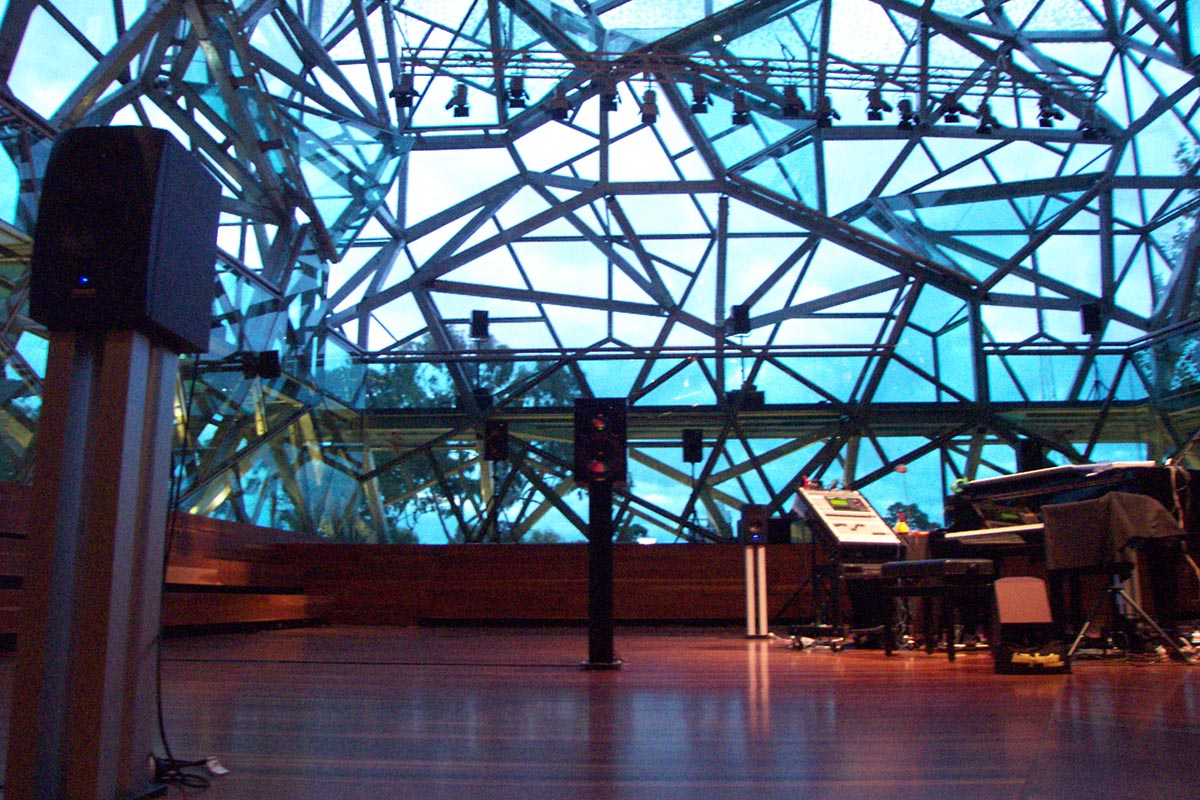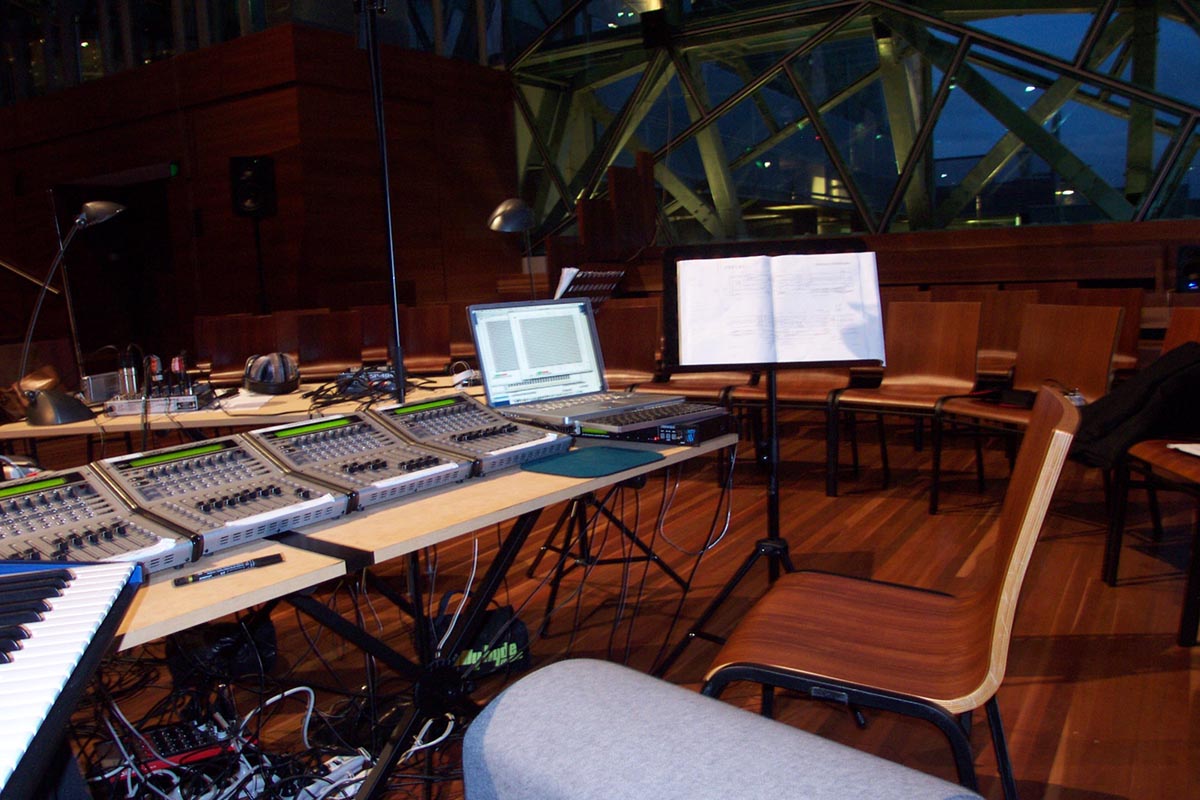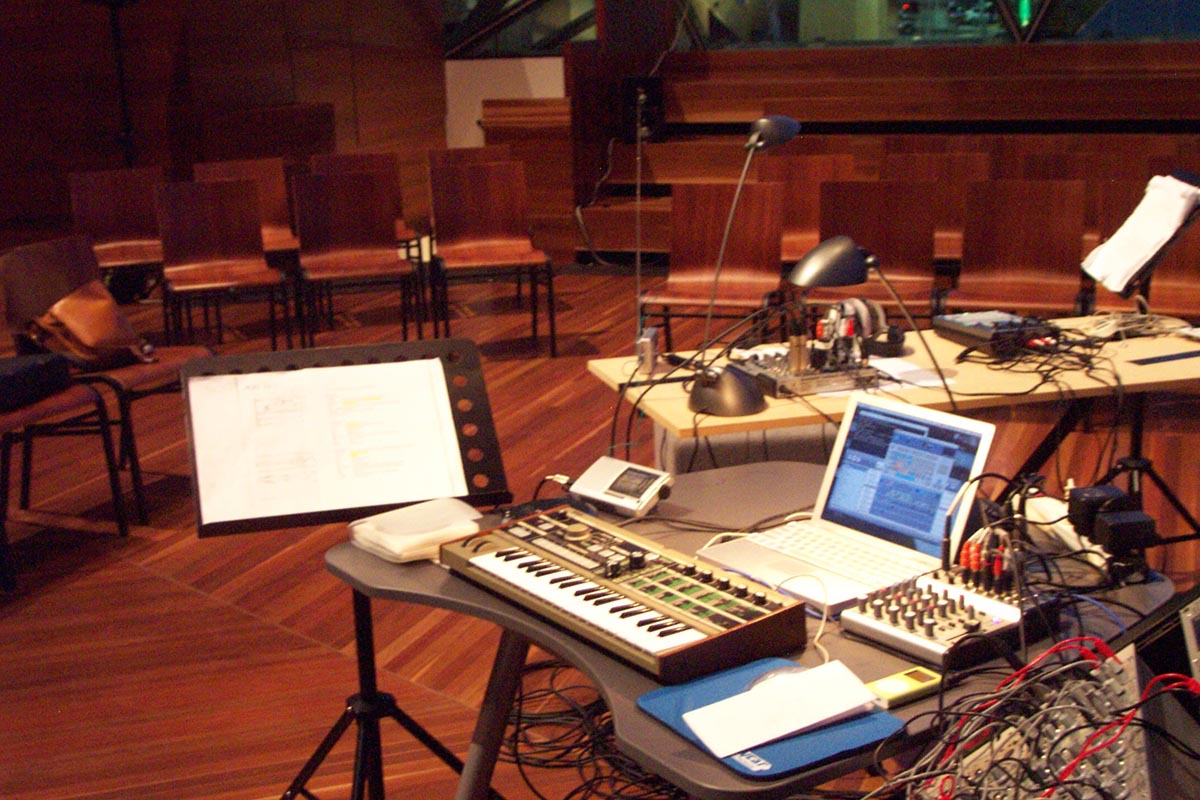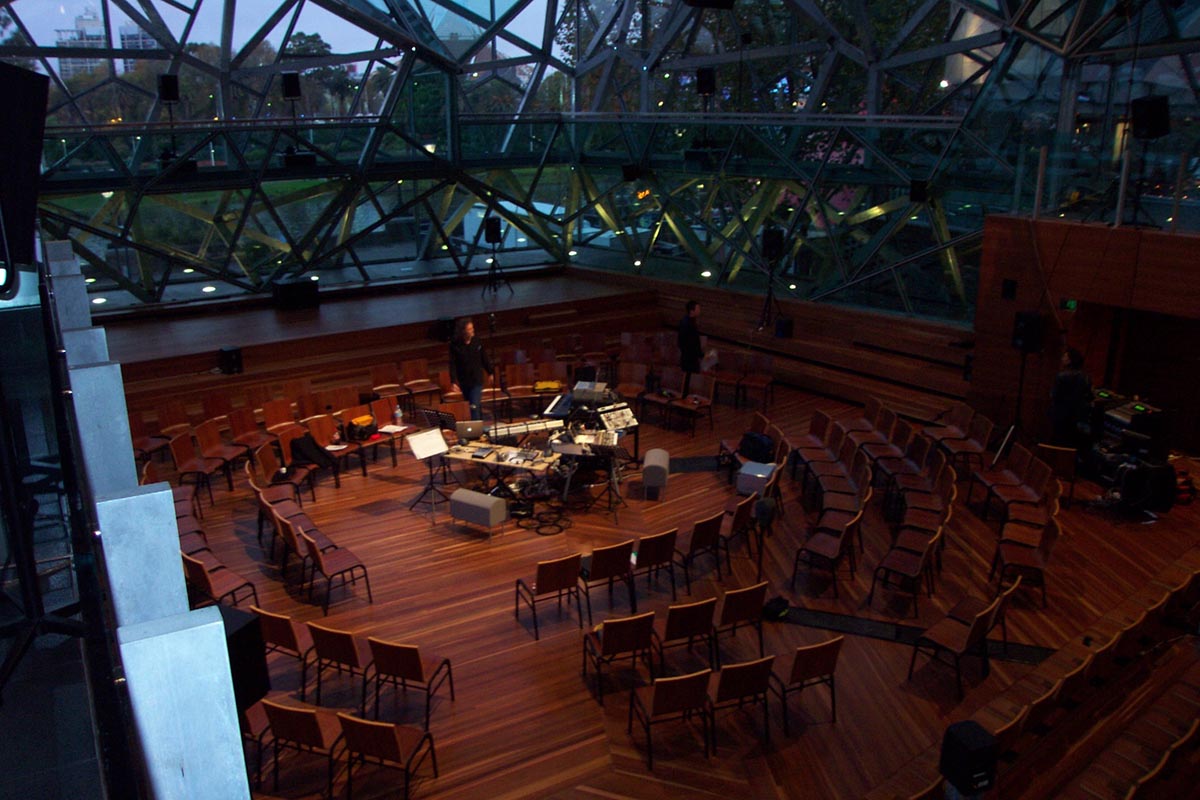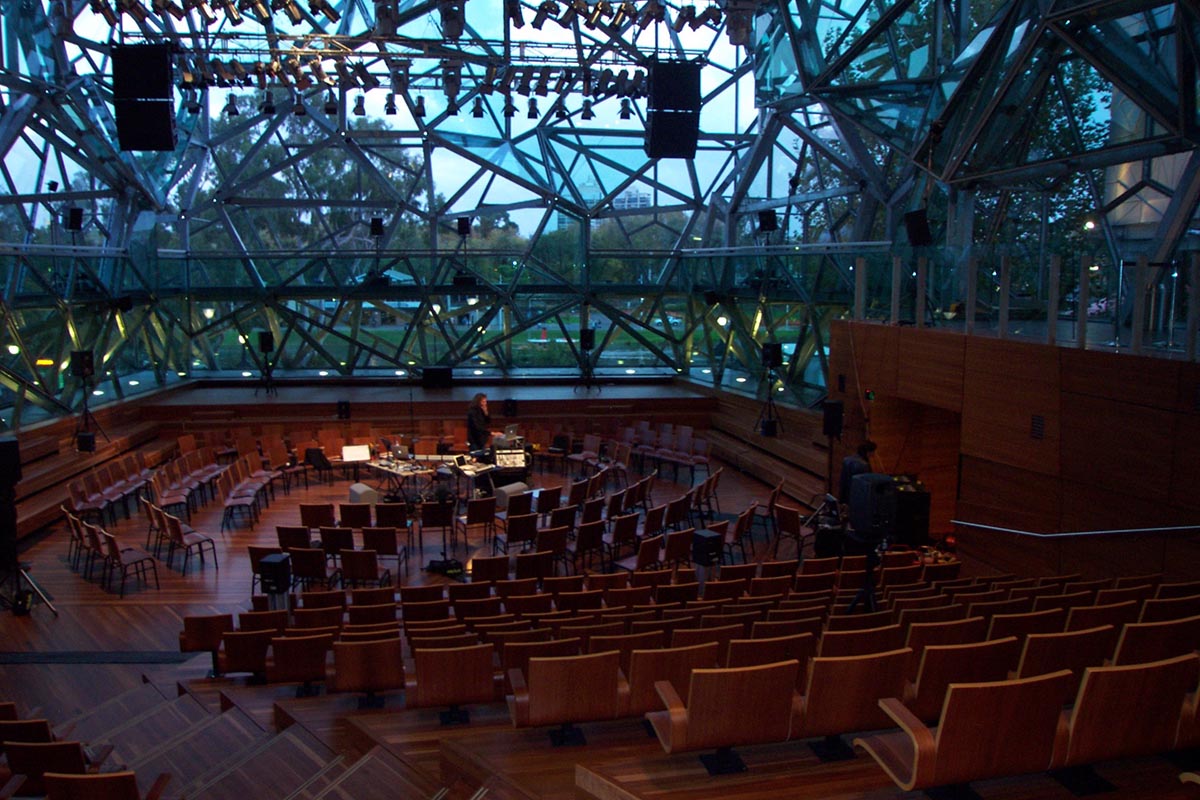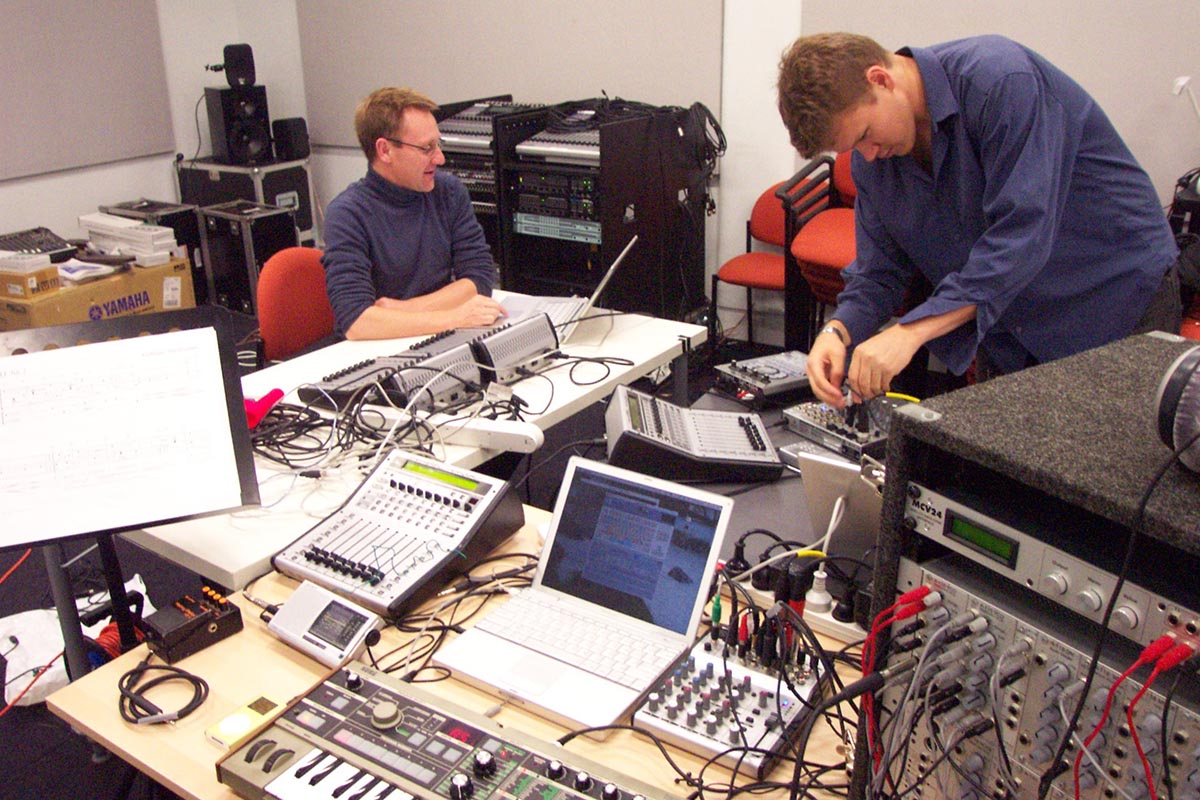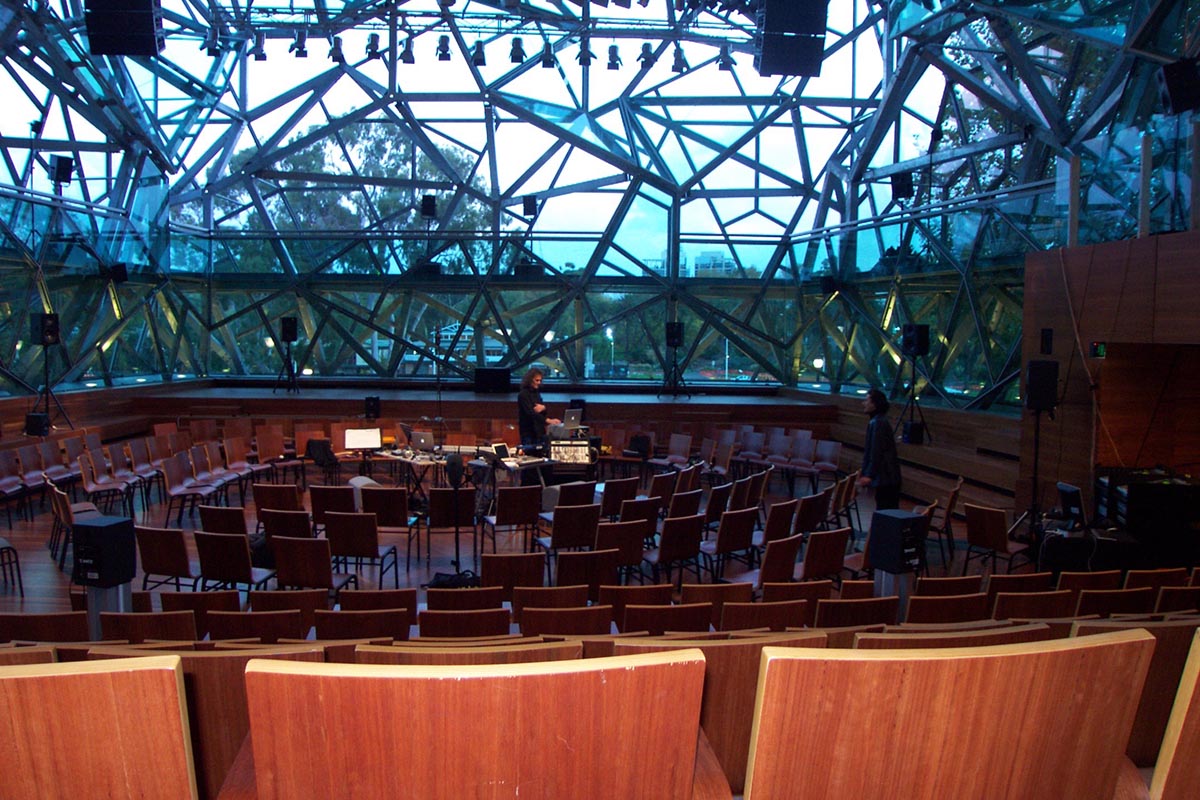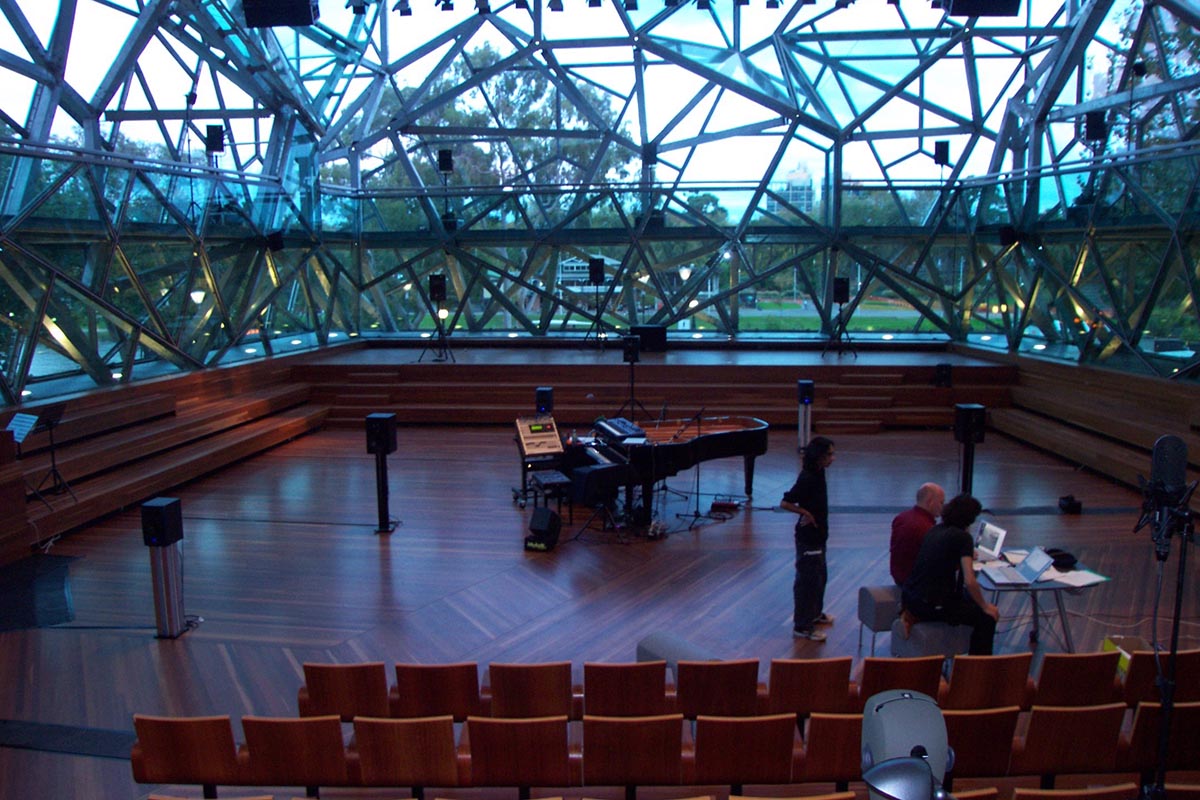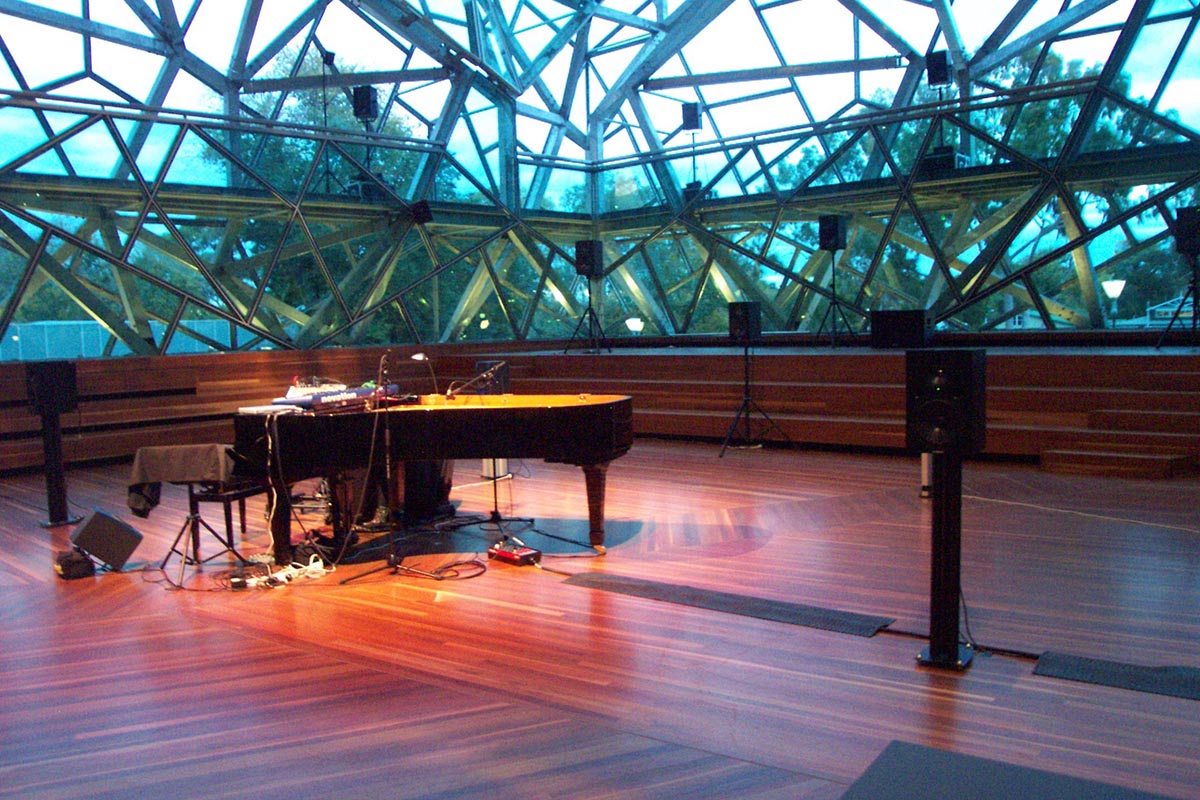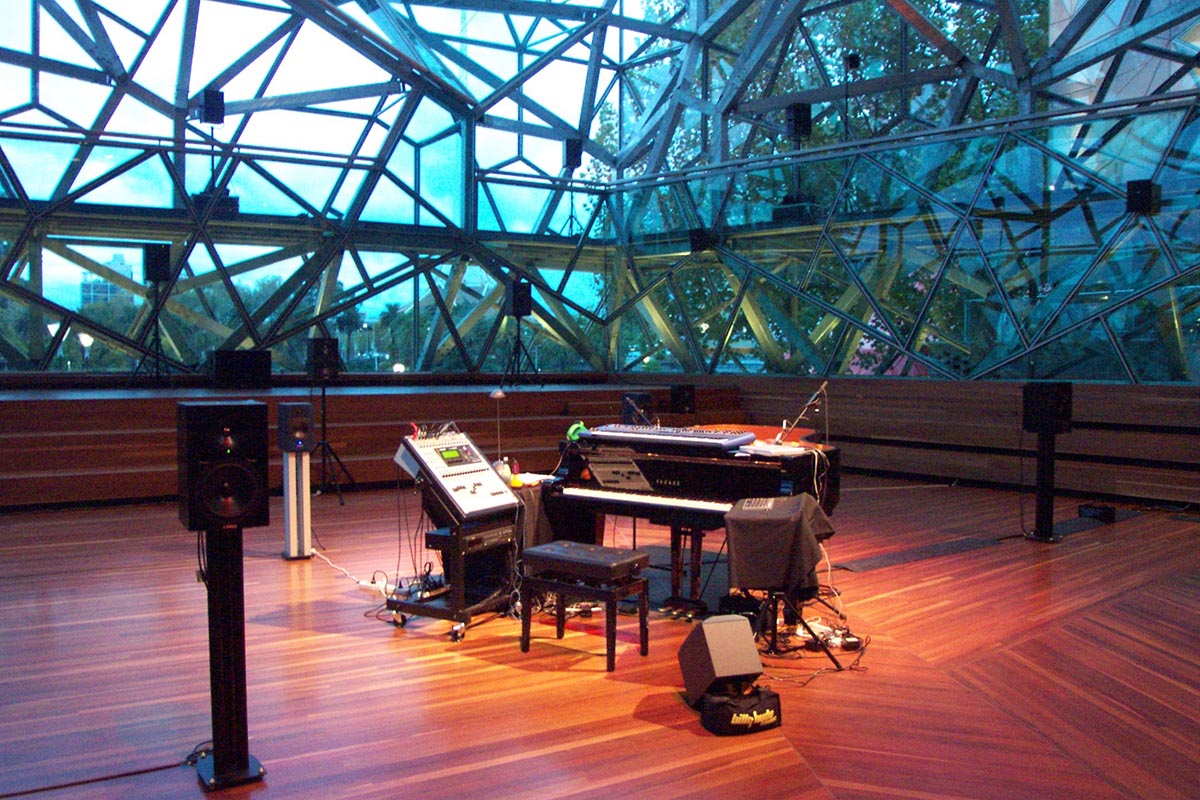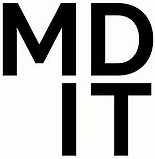The 2nd concert in the Spectrum series for SIAL Sound Studios
Spectrum 02 was held at BMW Edge (now The Edge) in 2006, across two nights.
Wednesday 3rd May 8pm – Concert 1:
Pre-concert installation by Derek Thompson
Log in – Ting Sun
Whence We Come – Michael Hewes
Pilate – Jeffrey Hannam
Symbiosis: Backface City – Lawrence Harvey
Interval
Pole – Karlheinz Stockhausen
Michael Fowler: synthesizer and electronics
Tristram Williams: trumpet and electronics
Thursday 4th May 8pm – Concert 2:
Pre-concert installation – Derek Thompson
across the road – Gregory Hooper
Decoupled – Tim Kreger
Symbiosis: Construct & Modelkit – Lawrence Harvey
Electronic Music for Piano – John Cage
Klavierstück XVI – Karlheinz Stockhausen
Further details regarding the works can be read below the image gallery.
3rd to 4th of May, 2006
BMW Edge, Federation Square, Melbourne
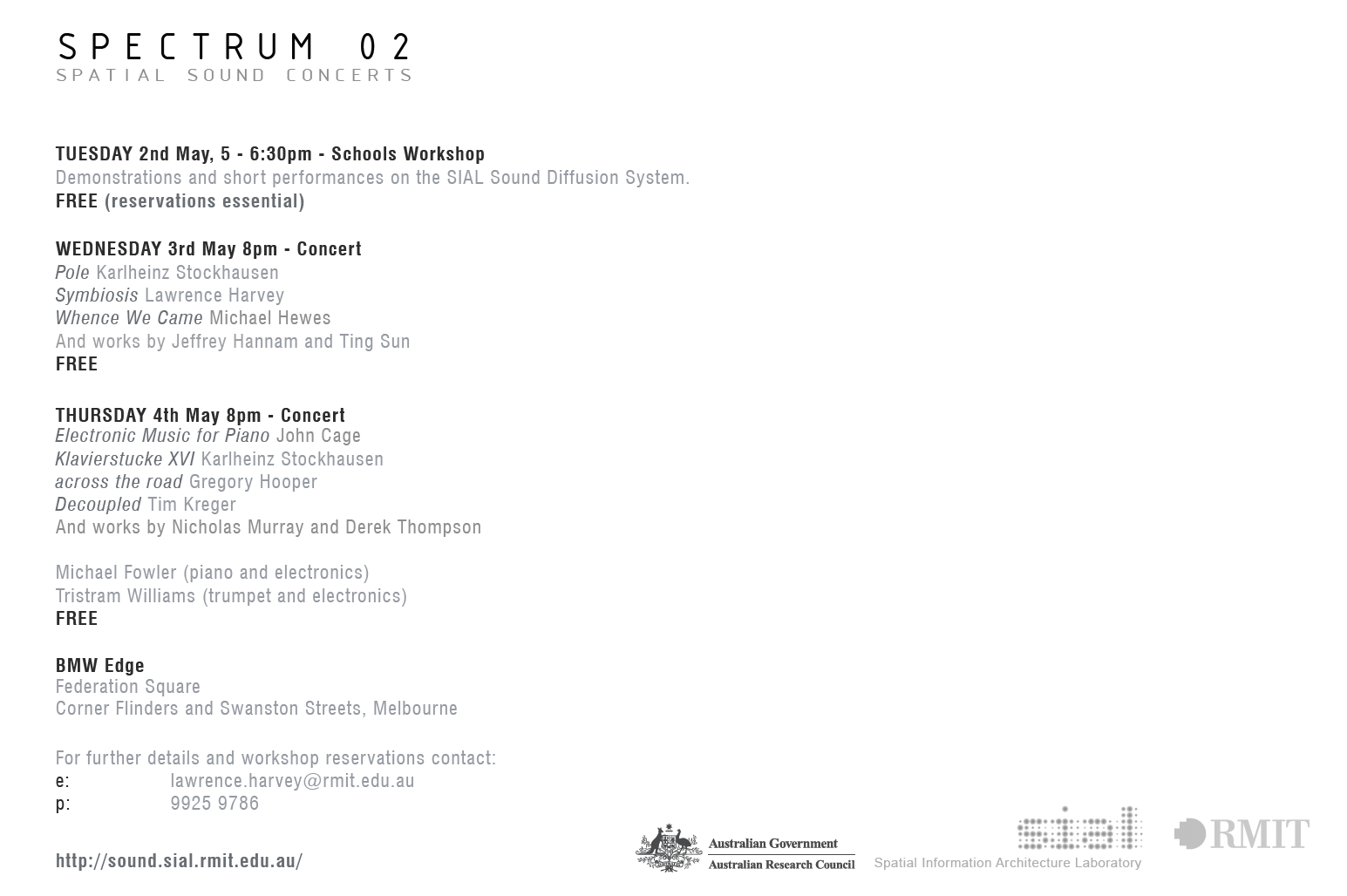
In This Room (2006) – Derek Thompson
We are no longer only sitting in this room, listening to a room other than the one we are in; but standing, walking, and experiencing the duration and movement of sound within this very space. In This Room is an installation sound piece, using live sound captured and reproduced. There are no pre-recorded sounds, and no pre-composed sound events. The sounds heard in this work are sourced entirely in real time from this very space. Similarly, all processing is controlled in real time by the level and location of sounds that already exist in the space. This is an experimental work exploring the notion of installed sound, and at the same time a study of the subtle movement and acoustic conditions that characterise the room that we are now in.
Pole (1970) – Karlheinz Stockhausen (b.1927)
For the 1970 World Fair Expo in Osaka, Stockhausen collaborated with the German architect Fritz Bornemann to create the German pavilion. The pavilion (a geodesic dome) housed 50 loudspeakers grouped into six layers that engulfed the audience from both above and below the seating. The work POLE (for duo) along with SPIRAL (for a soloist) and EXPO (for trio) share an innovative graphic notation that maps and signals transformations of thematic material, but leaves the creation of such material to the performers. Short-wave radios are the only indicated ‘instruments’ required, and provide sonic material that is to be imitated, processed and transformed by the players. In the case of POLE, each player has a hemisphere of loudspeakers that are partitioned into layers. The score also has a notated part for a sound engineer, who is responsible for the movement of each players sound within the layers of loudspeakers.
Electronic Music for Piano (1964) – John Cage (1912-92)
Perhaps one of Cage’s most cryptic scores, and one that seems to fall into a group of works that are loose descriptions of performances (i.e. Variations VI, VII & VIII) notated after the fact. Electronic Music for Piano was written in Stockholm on hotel stationary, and includes notes about the possible use, or exclusion, of a piano, star chart(s), microphones, amplifiers and oscilloscopes. For this particular version of the work a star chart of the northern sky (RA 8th to 12th, Dec +20 to -20) was superimposed over manuscript and various constellations and galaxies used to create thematic material. In addition, found sounds, signal processing and other works by Cage are used to fill out the spectrum.
Klavierstück XVI (1996) – Karlheinz Stockhausen (b.1927)
As with many of Stockhausen’s late instrumental works that incorporate multi-channel electronic music, Klavierstück XVI exists in an alternate format. Originally conceived as electronic music for the 12th Sound Scene from his opera FREITAG aus LICHT, the work was re-orchestrated because of a commission from the Micheli Competition for a new piano work. Stockhausen comments in the score that the interpretation of the composition consists of playing synchronously with the electronic music (using synthesizer, voice, samplers etc.) in such a way as to convey the virtuosity of the player’s imagination with an ever present sense of humour. Stockhausen meticulously notated the electronic music, and broadly indicates in the piano score groups of relative pitches that the interpreter is free to synchronise with the electronic music. The timbres and instruments to be used by the interpreter are also freely chosen.
Michael Fowler has been involved in avant-garde music making since his student days, and has performed and worked with some of the icons of Western Classical music (Karlheinz Stockhausen, Steve Reich, Milton Babbitt, George Crumb et.al) as a pianist and keyboardist. Michael is the inaugural SIAL Sound Studios Post-Doctoral Fellow, funded by an Australian Research Council Australian Post-doctoral Grant.
Tristram Williams is associate principal trumpet of the Melbourne Symphony Orchestra. He has been nationally broadcast on ABC radio both as a soloist and in recital, and is considered one of Australia’s brightest new virtuosi. He is an accomplished jazz improviser, and once picked up an old southern recipe for Chili from Clark Terry. He is also a fan of Kanye West.
Whence we come – Michael Hewes
Whence we come is a reflection on the passing of time and generations from the perspective of aural memory–an exploration of biological, cultural and social heritage and context. The piece takes the form of a short family tree of sonic signatures woven into an eclectic fabric whose individual threads are unrelated other than by having collectively risen to the surface during conscious reflection.
Michael Hewes is sometimes a sound engineer, sometimes a performer, sometimes a composer, and sometimes all at once. Over the last 15 years he has worked all around Australia and the world delivering contemporary music and spatial sound to Japanese theatres, Tasmanian blacksmith shops, Swiss lakes, Brisbane power stations, Perth foundries, Warsaw studios, Adelaide river banks and Berlin concert halls. Michael Hewes is employed as a casual lecturer in the Studios for the Spatial Sound Composition and Diffusion elective, and was involved in the establishment of the Studios between 2002-04.
Log in (2005) – Ting Sun
Log in is a work that explores the world of the internet through spatial sound composition. The internet is a huge interior space, where people gain access for various activities, and communicate through texts and imagery. People engage in the space without being inside the space, but what it is like to be inside? Start, perhaps, by closing one’s eyes and imagining with sound, thus allowing the physical world to dissolve and gradually enter into the fabricated space or place inside the network. Here, there are no walls, ceilings or floors, and its boundaries are constantly shifting and changing. The sound of typing on the keyboard becomes the key to accessing this space and remains the only link between two worlds–the real and virtual. Rather than floating in the space, the audience is placed in the center of the world, where everything else extends outward. Voices are zooming in and out of the space and at the same time coming from different directions. Log in takes the audience on a journey through the real and the imagined, leading the listener to experience this cyber world as a true spatial environment.
Ting Sun is currently studying Interior design in the school of Architecture and Design at RMIT University. This work was composed during her 1st semester elective at the SIAL Sound Studio in 2005.
Jeffrey Hannam is employed full-time in the Studios, and is responsible for technical and production management of the facility.
Decoupled – Tim Kreger (b.1967)
Decoupled is a developmental work exploring the use of virtual 3-D spaces to control audio environments. Many visual 3-D authoring environments provide extensive tools for controlling objects in three dimensions, enabling complex spatial manipulations which would be difficult to produce in traditional music/sound development environments. In this work the trajectories and location of the sounds are generated using a virtual space authoring environment and the sounds are generated using the interactive music environment Supercollider. The process of manipulation is separate from that of the production/generation.
Tim Kreger was born in Sydney, Australia in 1967. He studied composition with Larry Sitsky and David Worrall at the Canberra School of Music, Australian National University and received a Bachelor of Music (composition) degree in 1990. In 1997 he received a Masters of Music degree from the same institution. From 1991-2001 he was Lecturer in Computer Music at The Australian Centre for the Arts & Technology. He has been involved in numerous collaborations, most recently with Simulus (with Steve Adam & Ross Bencina- -www.simulus.org) and Metraform (www.metraform.com). Tim currently develops interactive applications for Museums, Galleries and Research Institutions (www.audioreactive.com). Tim Kreger has been associated with the Studios as a guest lecturer and post-graduate supervisor, and project manager on the CitySounds 2.0 project.
across the road – Greg Hooper
across the road ’is taken from a series of recordings I made of a house being built across the road from where I live. As in many suburbs, renovations hum along in the background but the building of a whole new house is quite rare. I wanted to get the sonic impression of living near that process, rather than the sounds of being on the building site itself. Recordings were made for an hour each week across the 28 weeks of the building and each week contributes in turn to the overall composition. The global dynamics of the piece are derived from a sketch of the weekly activity cycle made with the assistance of the builder. Both he and the site workers were happy to have their activity recorded.
Greg Hooper has a PhD in Psychiatry with an interest in science (neuroscience, complex system dynamics) and the arts (music, visual art). His current research is focussed on the bio-behavioural foundations of music as well as acoustic ecology and composition. He has published on the development of scales to measure emotional intelligence, electrophysiology, brain dynamics, statistics, and bipolar disorder.
He has recently returned to composition after a long absence, with works performed at Listening to the Mind Listening, ICAD 2004: Sydney Opera House and “Elektronischer Fruehling” (Electronic Spring): Alte Schmiede, Vienna. He reviews exhibitions, concerts and CD’s for REALTIME. Gregory Hooper has been associated with the SIAL Sound Studios as co-researcher through the Australasian Centre for Interaction Design (ACID), and as a guest critic for post-graduate presentations in the Graduate Research Conference.
Symbiosis: Backface, Construct, Modelkit Jesus – Lawrence Harvey
Symbiosis
Symbiosis is a forty-eight minute cycle of six works, composed as the sound design for a collaborative virtual reality project, completed with Metraform members Jonathan Duckworth and Mark Guiglimetti. It was premiered in the 2001 Melbourne International Film Festival’s media arts programme – Sideshow. Three of the original six works will be presented as concert pieces in Spectrum 02.
The six visual environments of Symbiosis are abstract, evocative 3D chambers, described as contemplative chambers, through which an audience was flown at a gentle rate. One of the challenges in creating the original sound design was to ensure a sense of motion and transition through a mainly static visual environment, which was achieved through subtle spatialisation of micro-timbres, and the constant juxtaposition of gestures and textural layers of sound. These performances of Symbiosis in Spectrum 02, are the concert premieres of these works.
Backface
The dominant sound of this work is a large tam-tam that appears in several transformed versions. There are a number of qualities imbued into the space through by sound such as immensity, and a sense of ritual and immersion. The 3D environment of Backface is inhabited by a series of motionless human figures, caught in poses of physical exertion. The physicality of the figures is marked by extreme cycles of breathing, digitally transformed in various ways, so they dissolve into metallic like streams, that seamlessly transform into the dominant tam-tam sounds. The effect is one where the auditory presence of the figures appears to be a momentary solidifying out of, then dissolving back into surrounding environment.
Construct
Construct was the last soundscape created for Symbiosis. The 3D visual environment is comprised of organic forms, scaffold like constructions and massed scattered geometrical volumes that gradually appear to the viewer in a slow but regular rhythm. A connection is made between the visual and sonic design, through a series of dramatic metallic sounding gestures that envelop the listener and evolving textures that appear, fill and recede from the space.
